
Xerxes IZURK-seez, commonly known as Xerxes the Great, was a Persian ruler who served as the fourth King of Kings of the Achaemenid Empire, reigning from 486 BC until his assassination in 465 BC. He was the son of Darius the Great and Atossa, a daughter of Cyrus the Great. In Western history, Xerxes is best known for his invasion of Greece in 480 BC, which ended in Persian defeat. Xerxes was designated successor by Darius over his elder brother Artobazan and inherited a large, multi-ethnic empire upon his father's death. He consolidated his power by crushing revolts in Egypt and Babylon, and renewed his father's campaign to subjugate Greece and punish Athens and its allies for their interference in the Ionian Revolt. In 480 BC, Xerxes personally led a large army and crossed the Hellespont into Europe. He achieved victories at Thermopylae and Artemisium before capturing and razing Athens. His forces gained control of mainland Greece north of the Isthmus of Corinth until their defeat at the Battle of Salamis. Fearing that the Greeks might trap him in Europe, Xerxes retreated with the greater part of his army back to Asia, leaving behind Mardonius to continue his campaign. Mardonius was defeated at Plataea the following year, effectively ending the Persian invasion.

Xerxes II was a Persian king who was very briefly a ruler of the Achaemenid Empire, as the son and successor of Artaxerxes I.
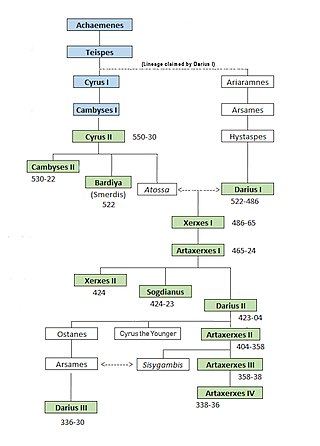
Darius II, also known by his given name Ochus, was King of Kings of the Achaemenid Empire from 423 BC to 405 or 404 BC.
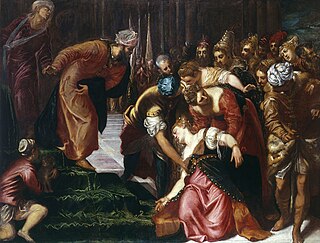
Ahasuerus is a name applied in the Hebrew Bible to three rulers of Ancient Persia and to a Babylonian official first appearing in the Tanakh in the Book of Esther and later in the Book of Tobit. It is a transliteration of either Xerxes I or Artaxerxes I; both are names of multiple Achaemenid dynasty Persian kings.

Artaxerxes I was the fifth King of Kings of the Achaemenid Empire, from 465 to December 424 BC. He was the third son of Xerxes I.

Atossa was an Achaemenid empress. She was the daughter of Cyrus the Great, the sister of Cambyses II, the wife of Darius the Great, the mother of Xerxes the Great and the grandmother of Artaxerxes I.
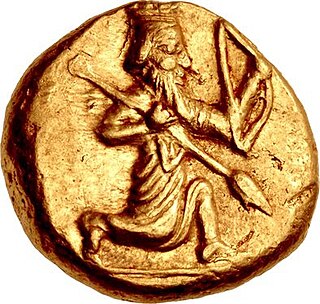
Sogdianus was briefly a ruler of the Achaemenid Empire for a period in 424–423 BC. His short rule—lasting not much more than six months—and the little recognition of his kingdom are known primarily from the writings of Ctesias; who is known to be unreliable. He was reportedly an illegitimate son of Artaxerxes I by his concubine Alogyne of Babylon.
Amestris was an Achaemenid queen, wife of king Xerxes I and mother of king Artaxerxes I.
The Persian Princess or Persian Mummy is a mummy of an alleged Persian princess who surfaced in Pakistani Baluchistan in October 2000. After considerable attention and further investigation, the mummy proved to be an archaeological forgery and possibly a murder victim.
The Orontid dynasty, also known as the Eruandids or Eruandunis, ruled the Satrapy of Armenia until 330 BC and the Kingdom of Armenia from 321 BC to 200 BC. The Orontids ruled first as client kings or satraps of the Achaemenid Empire and after the collapse of the Achaemenid Empire established an independent kingdom. Later, a branch of the Orontids ruled as kings of Sophene and Commagene. They are the first of the three royal dynasties that successively ruled the antiquity-era Kingdom of Armenia.
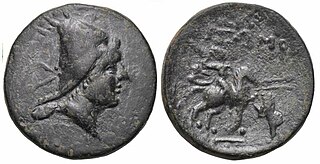
Arsames I seems to have taken control of Commagene, Sophene and Armenia in the year 260 BC after the death of his grandfather Orontes III, king of Armenia, and his father Sames, king of Commagene.
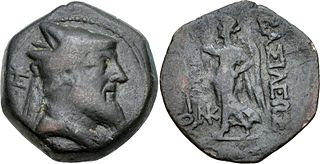
Xerxes was king of Sophene and Commagene from 228 BC to 212 BC. He was the son and successor of Arsames I.
Damaspia was an Achaemenid queen, wife of the king Artaxerxes I and mother of Xerxes II, his legitimate heir.

Masistes was a Persian prince of the Achaemenid Dynasty, son of king Darius I and of his wife Atossa, and full brother of king Xerxes I. He was satrap (governor) of Bactria during his brother's reign, where he attempted to start a revolt in 478 BC.
Artystone also known as Irtašduna in the Fortification tablets, was a Achaemenid princess, daughter of king Cyrus the Great, and sister of Cambyses II, Atossa and Smerdis. Along with Atossa and her niece Parmys, Artystone married king Darius I. It is argued that by marrying the female offspring of Cyrus, the founder of the empire, the new king aimed to prevent his rule from being contested, since Darius himself was not of royal blood.

The Twenty-seventh Dynasty of Egypt, also known as the First Egyptian Satrapy, was a satrapy of the Achaemenid Empire between 525 and 404 BC. It was founded by Cambyses II, the King of Persia, after the Battle of Pelusium and the Achaemenid conquest of Egypt, and his subsequent crowning as Pharaoh of Egypt. It was disestablished upon the rebellion and crowning of Amyrtaeus as Pharaoh. A second period of Achaemenid rule in Egypt occurred under the Thirty-first Dynasty of Egypt.

Cassandane or Cassandana was an Achaemenian queen and the wife of king Cyrus the Great, the mother of Cambyses II and Atossa and the grandmother of Xerxes I.
Amastris or Amestris may refer to:
Darius, was crown prince of the Persian Empire. He was the eldest son of the Persian king Xerxes I and his wife Amestris. His younger brothers were Hystaspes and Artaxerxes, and his younger sisters were Rhodogune and Amytis.
Rhodogune was a Persian princess from the Achaemenid dynasty, who was a daughter of Artaxerxes II.











